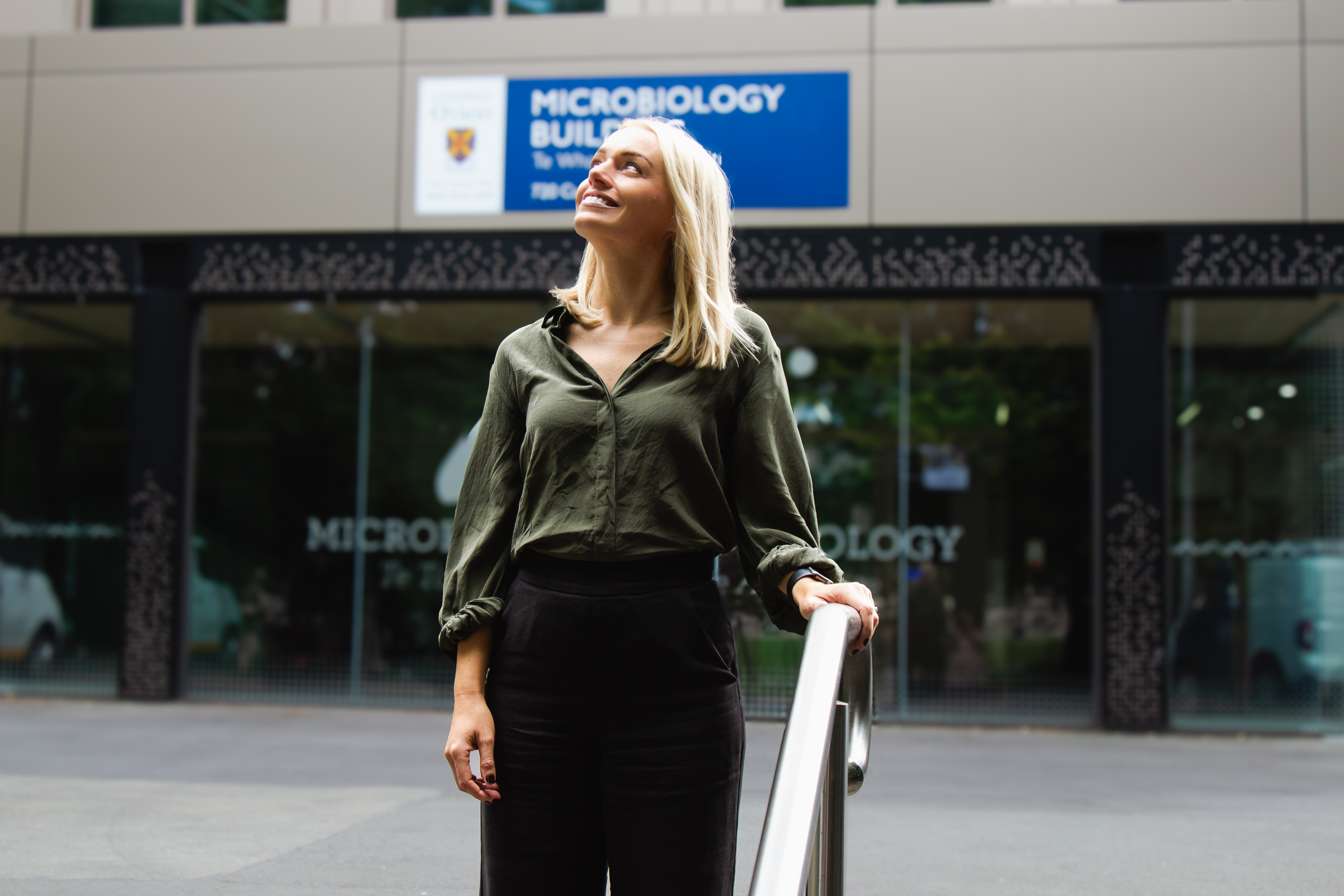From COVID-19 to bird flu: winning communication about viruses

MEDIA RELEASE: TE PUIAKI WHAKAPĀ PŪTAIAO SCIENCE COMMUNICATION PRIZE
Te Puiaki Whakapā Pūtaiao the Prime Minister’s Science Communicator is Professor Jemma Geoghegan from the University of Otago.
Jemma has played a crucial role in enhancing public understanding of infectious diseases and advising policymakers on pandemic threats in New Zealand.
Although Jemma’s research is focused on virus evolution and how viruses jump to new host species, she is widely recognised for her work communicating about COVID-19 during the pandemic. More recently, she has provided insights on the emergence and spread of bird flu.
Jemma is relied upon as a trusted expert by the public, policy makers and community groups – skillfully explaining complicated and often rapidly changing information about infectious disease.
COVID-19
In 2021, Jemma was awarded the Prime Minister’s MacDiarmid Emerging Scientist Prize for her work on virus spread and evolution during the COVID-19 pandemic. Now, she is being recognised for science communication that bridges the gap between scientists and the public, helping people understand viruses and reduce fear.
Jemma’s emergence as a science communicator wasn’t planned. She moved back to Aotearoa in early 2020 as COVID-19 began emerging in China and rapidly spreading across the globe.
“During that time, I was trying to use my expertise in virus geonomics and virus evolution to reassure people about what the next variant meant, and what that meant for the progression of the virus.”
Beyond public communication through news media, Jemma has worked closely with public health decision-makers to use data from genome sequencing of COVID-19 to inform policies and responses to the pandemic.
Through projects like a collaboration with Māori-founded Maui Studios to create an animated short film, Jemma has made complex scientific concepts — such as genomic sequencing of viruses — accessible to children. The project’s aim was to explain viruses and how genomic sequencing was used during the COVID-19 pandemic.
Communicating about viruses in wildlife
The work of Jemma and her research group spans health, agriculture, and wildlife management.
She says that although COVID-19 is still causing a lot of infections in New Zealand and abroad, there are dozens more viral threats to human, animal, and plant health that the public should be aware of.
No matter who she is communicating with, Jemma says that the key to effective science communication is to be engaging.
“I always ask myself, why should people care? Why do people need to listen to what I’ve got to say?”
Recently, Jemma has been working with officials on an infectious disease in hoiho – yellow-eyed penguins – which is one of the main reasons the birds’ population is declining.
“This awful disease has emerged in the last few years called respiratory distress syndrome. And my research has found a new virus that is likely responsible for this.”
“There are lots of interested people, and communicating with [them] requires knowing when to communicate different aspects of that research at different times.”
Jemma says, however, that one of the biggest viral threats facing Aotearoa and the wider world is avian influenza virus (commonly known as bird flu). This is where much of her communication work has been focused in recent years.
“Most endemic species in Aotearoa are bird species,” Jemma explains, adding that more than 80% of them are “threatened with the possibility of extinction”.
She says the introduction of bird flu, would likely “be catastrophic” to our native bird population.
Jemma says a wide range of people – from those who live near migratory birds to those who work in conservation – will be dramatically affected when bird flu arrives in Aotearoa.
Advocacy and challenge
Jemma has been advocating for better systems for virus detection and surveillance, especially for bird flu.
She says that as bird flu has emerged, there have been people that have disagreed with her advice, but she welcomes their challenge.
“It’s part of science, I think, that people are going to disagree with you. And I welcome that because we can present our ideas and be challenged on them.”
Jemma says that science communication can help people to feel less afraid by deepening their understanding.
“I see my responsibility as a science communicator is to try to alleviate some of those anxieties that people might have. Because if you know more about it, then potentially you won’t be as scared.”
